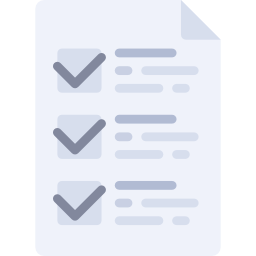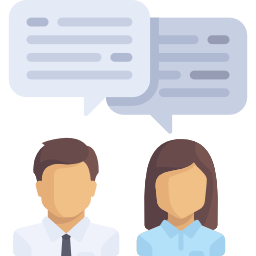Aphasia Classifications
Aphasia, a language disorder resulting from damage to the brain, affects an individual’s ability to communicate. It manifests in various forms, depending on the location and extent of brain injury. Understanding the classifications of aphasia is crucial for accurate diagnosis and tailored treatment.
One primary classification is Broca’s aphasia, also known as expressive aphasia. This type results from damage to Broca’s area in the frontal lobe, responsible for speech production. Individuals with Broca’s aphasia struggle to form complete sentences, often producing short, effortful phrases. They may understand spoken language but have difficulty with grammar and syntax. Frustration is common, as they are aware of their communication difficulties.
Time to feel better. Find a mental, physical health expert that works for you.
Wernicke’s aphasia, or receptive aphasia, stems from damage to Wernicke’s area in the temporal lobe, responsible for language comprehension. Those with Wernicke’s aphasia produce fluent but nonsensical speech, often referred to as “word salad.” They struggle to understand spoken and written language, and they may be unaware of their communication errors.
Global aphasia is the most severe form, resulting from extensive damage to multiple language areas in the brain. Individuals with global aphasia experience significant impairment in both expressive and receptive language skills. They may have limited speech output and struggle to understand even simple words or phrases.
Anomic aphasia is characterized by difficulty finding words, particularly nouns and verbs. Individuals with anomic aphasia can speak fluently and understand language, but they struggle to retrieve specific words. This type of aphasia can be less severe than other forms, and individuals may use circumlocutions or substitute words to compensate.
Conduction aphasia results from damage to the arcuate fasciculus, a bundle of nerve fibers connecting Broca’s and Wernicke’s areas. Individuals with conduction aphasia can understand language and speak fluently, but they have difficulty repeating words or phrases. They may also make phonemic paraphasias, substituting similar-sounding words or sounds.
Primary progressive aphasia (PPA) is a neurodegenerative condition that gradually impairs language abilities. Unlike other forms of aphasia caused by stroke or brain injury, PPA progresses over time. There are different subtypes of PPA, each affecting different aspects of language.
Accurate classification of aphasia is crucial for developing targeted rehabilitation strategies. A comprehensive assessment by a speech-language pathologist is essential for determining the type and severity of aphasia, guiding the development of individualized treatment plans.
Connect Free. Improve your mental and physical health with a professional near you

Aphasia Treatment Strategies
Aphasia treatment aims to improve communication skills and enhance quality of life for individuals affected by this language disorder. Effective strategies often involve a combination of therapy, technology, and support.
Speech-language therapy is the cornerstone of aphasia treatment. Therapists work with individuals to improve their ability to understand and use language. Therapy sessions may focus on various aspects of communication, including word retrieval, sentence formation, and comprehension. Different therapy approaches are used, including constraint-induced language therapy (CILT), which encourages the use of verbal communication, and melodic intonation therapy (MIT), which uses singing to improve speech.
Computer-based therapy can complement traditional therapy sessions. Software programs and apps provide interactive exercises that target specific language skills. These tools can be particularly helpful for practicing word retrieval, grammar, and reading comprehension. Technology allows for personalized and flexible practice, enabling individuals to work on their language skills at their own pace.
Group therapy offers a supportive environment where individuals with aphasia can practice communication skills and share experiences. Group sessions can help reduce feelings of isolation and provide opportunities for social interaction.
Communication partner training is essential for improving communication in everyday life. Family members, caregivers, and friends are trained to use effective communication strategies, such as simplifying language, using visual aids, and providing ample time for responses. This training helps create a supportive communication environment.
Augmentative and alternative communication (AAC) devices can be used to support communication for individuals with severe aphasia. AAC devices include communication boards, tablets with speech-generating apps, and other assistive technologies. These devices can help individuals express their needs and participate in conversations.
Pharmacological interventions are sometimes used in conjunction with speech therapy. While there is no medication that can cure aphasia, some drugs may help improve language function. Research is ongoing to explore the potential benefits of pharmacological treatments.
Lifestyle adjustments can also play a role in aphasia management. Reducing stress, maintaining a healthy diet, and engaging in regular exercise can support overall well-being and cognitive function.
Aphasia treatment requires a multidisciplinary approach involving speech-language pathologists, neurologists, psychologists, and other healthcare professionals. Individualized treatment plans are essential, considering the specific needs and abilities of each person. Consistent therapy and ongoing support are crucial for achieving optimal outcomes.

Free consultations. Connect free with local health professionals near you.
Conclusion
Aphasia is a complex language disorder resulting from brain damage, manifesting in various forms like Broca’s, Wernicke’s, global, anomic, conduction, and primary progressive aphasia, each affecting different aspects of communication. Accurate classification is crucial for tailored treatment. Effective aphasia treatment strategies include speech-language therapy, computer-based therapy, group therapy, communication partner training, and AAC devices. A multidisciplinary approach, involving healthcare professionals and family support, is essential for maximizing communication skills and improving the quality of life for individuals with aphasia.
Time to feel better. Find a mental, physical health expert that works for you.
Common FAQs
What is aphasia?
What are the main types of aphasia?
What causes aphasia?
How is aphasia diagnosed?
Can aphasia be cured?
What is the role of speech-language therapy in aphasia treatment?
How can family members support someone with aphasia?
Are there any medications for aphasia?
What are AAC devices?
How long does aphasia treatment typically last?
People also ask
Q: What does aphasia mean?
Q:What is aphasia and dysphasia?
Q: Is there another name for aphasia?
Q:How did Bruce Willis get aphasia?
NOTICE TO USERS
MindBodyToday is not intended to be a substitute for professional advice, diagnosis, medical treatment, or therapy. Always seek the advice of your physician or qualified mental health provider with any questions you may have regarding any mental health symptom or medical condition. Never disregard professional psychological or medical advice nor delay in seeking professional advice or treatment because of something you have read on MindBodyToday.
Share this article

Let us know about your needs

Quickly reach the right healthcare Pro

Message health care pros and get the help you need.
Popular Healthcare Professionals Near You
You might also like
What is Suicide Therapy?
, What is Suicide Therapy ? Everything you need to know Find a Pro Suicide Therapy Suicidal ideation and attempts […]
What is Sex Therapy?
, What is Sex Therapy ? Everything you need to know Find a Pro Sex Therapy Sex therapy is a […]
What is Sleep Disorder Therapy?
, What is Sleep Disorder Therapy ? Everything you need to know Find a Pro Sleep Disorder Therapy Sleep disorders […]





